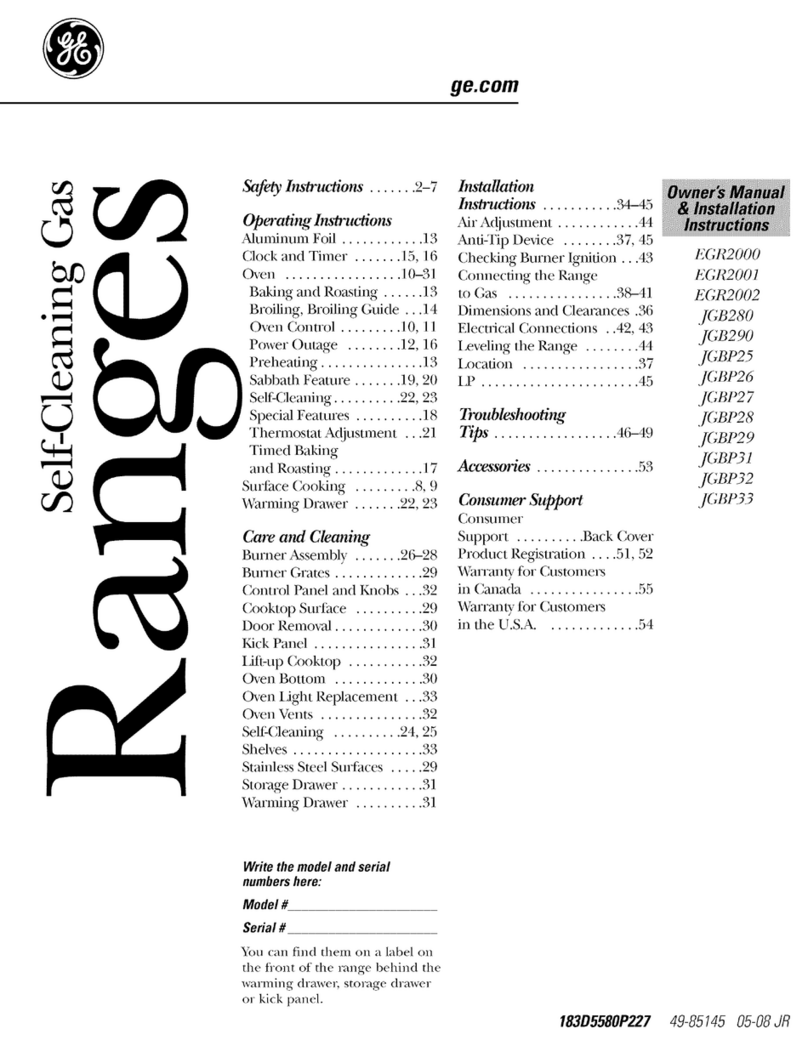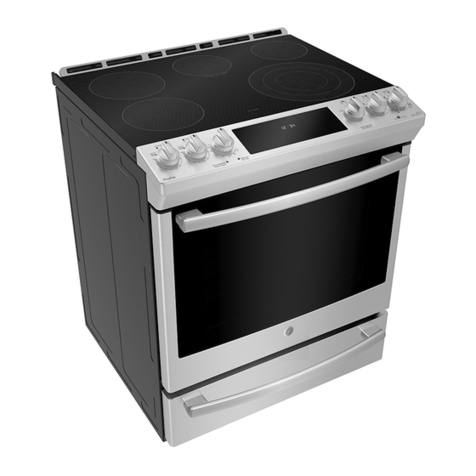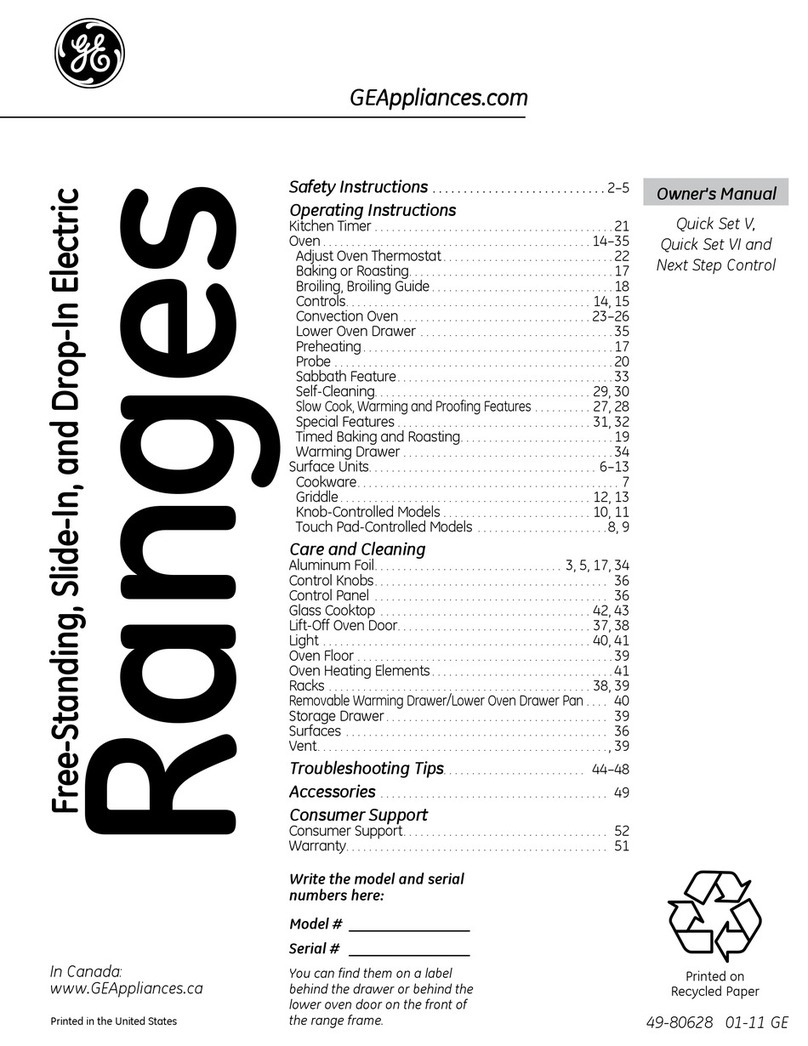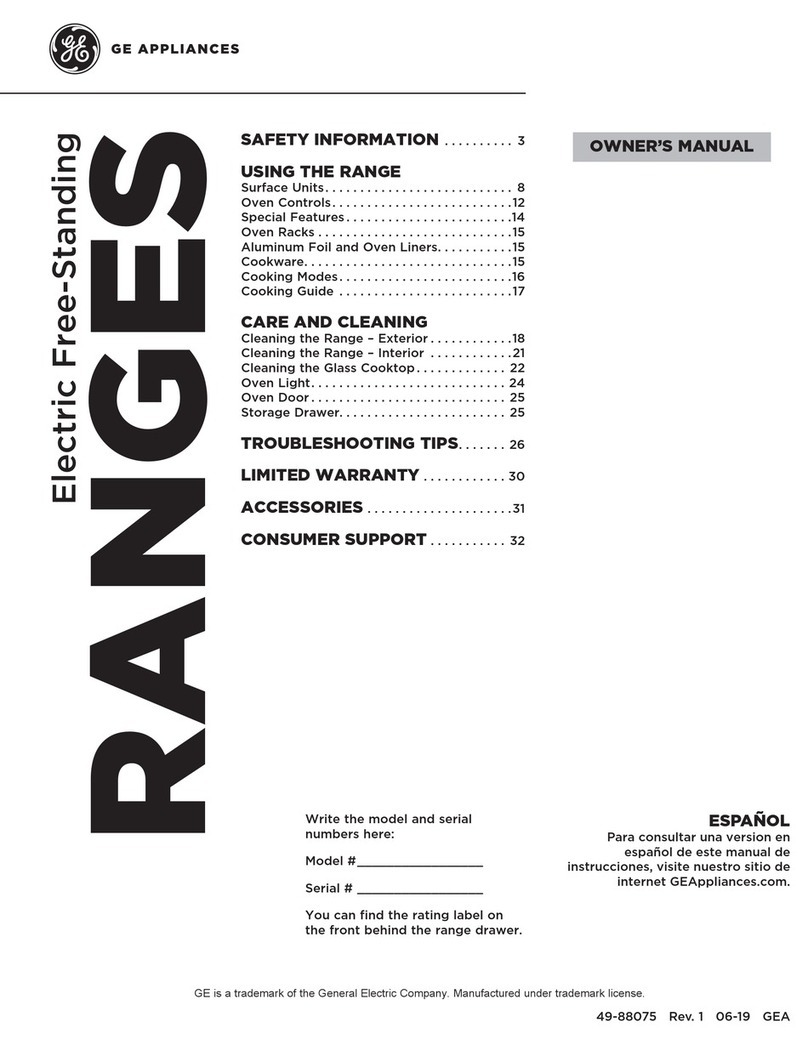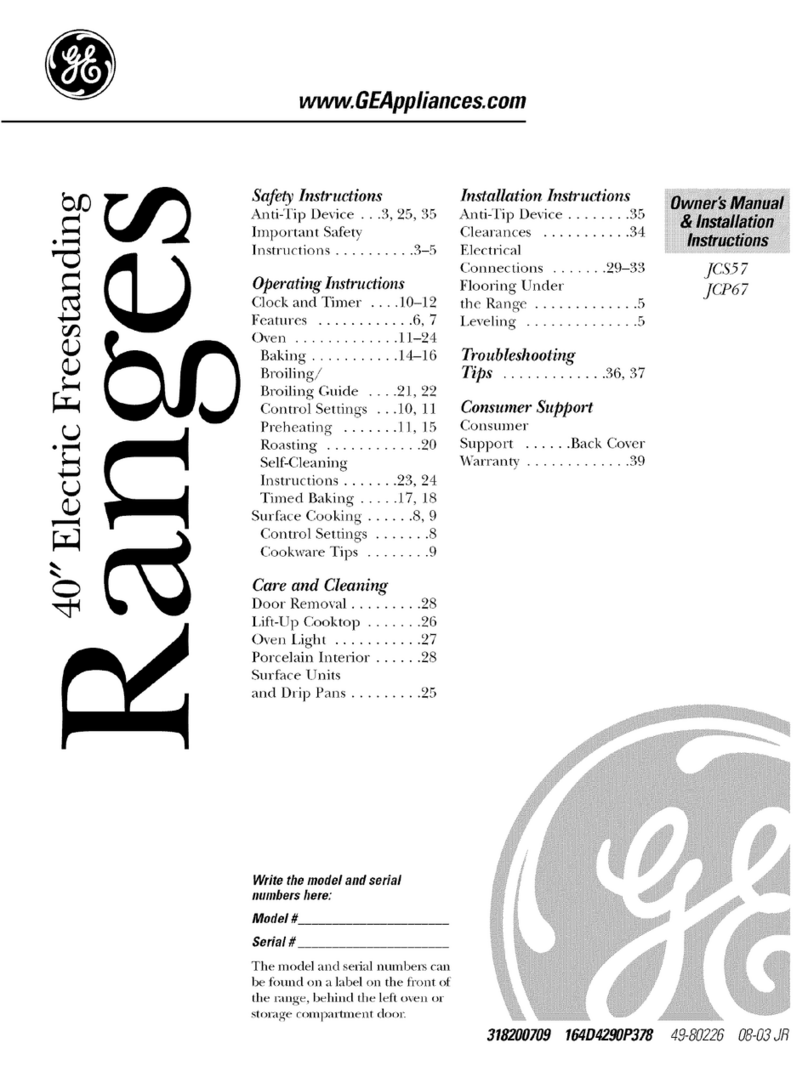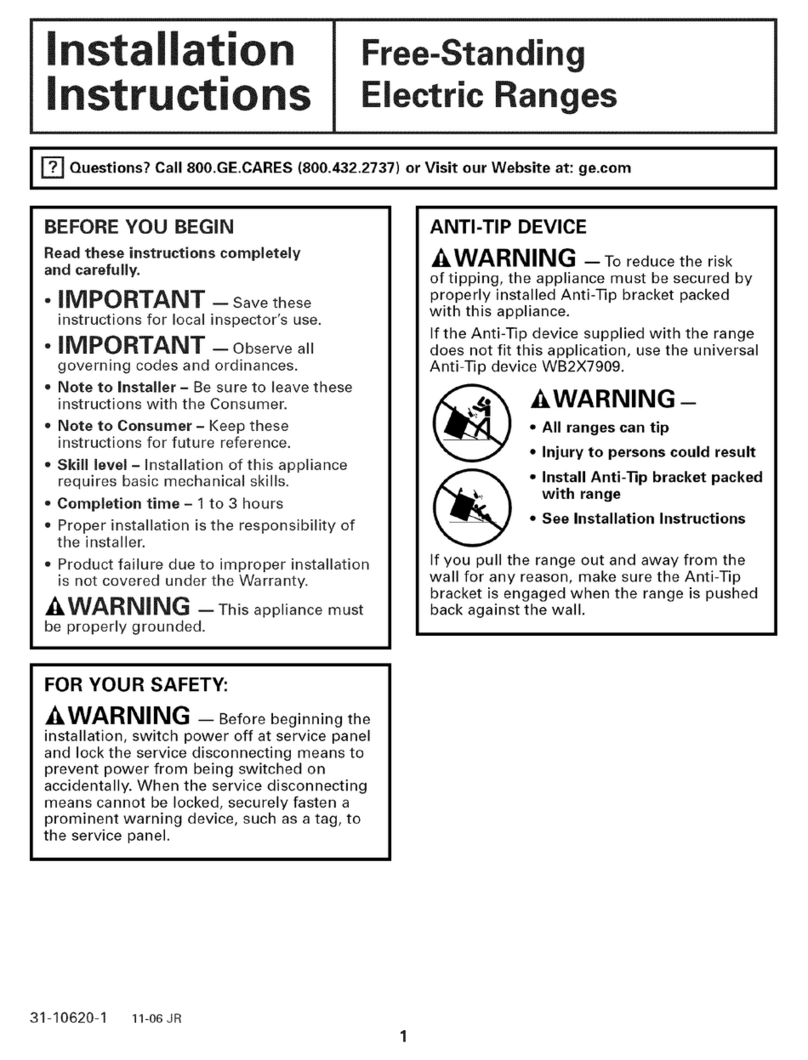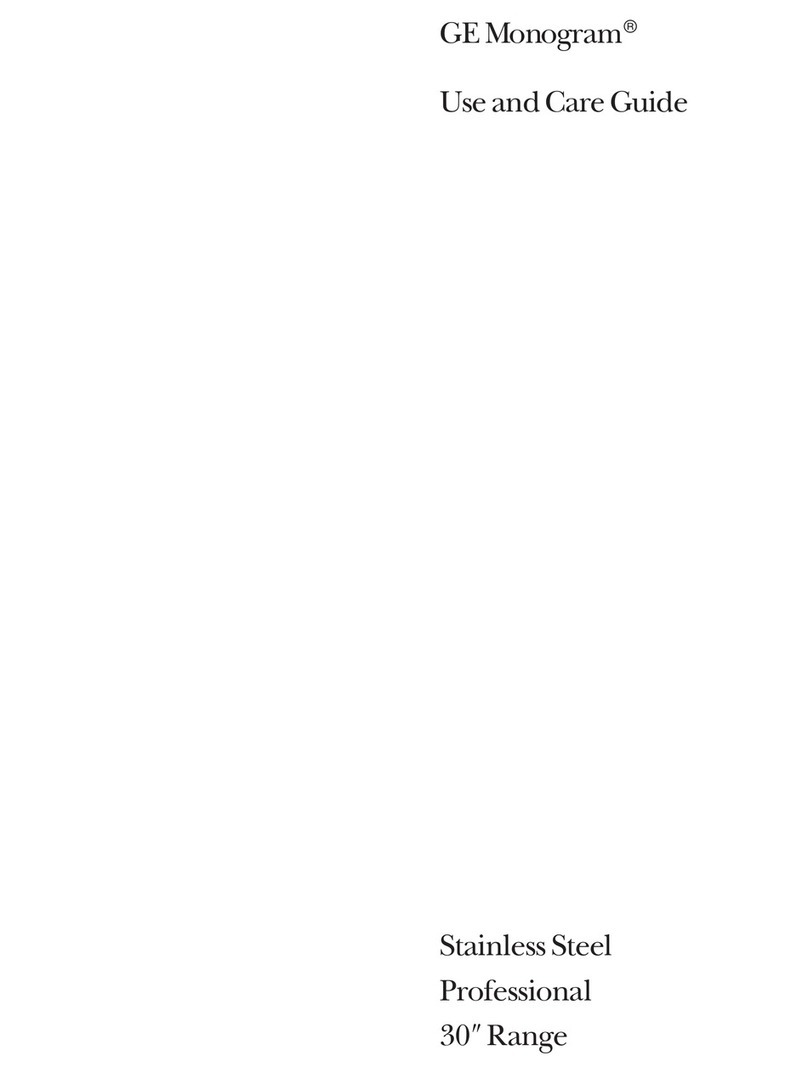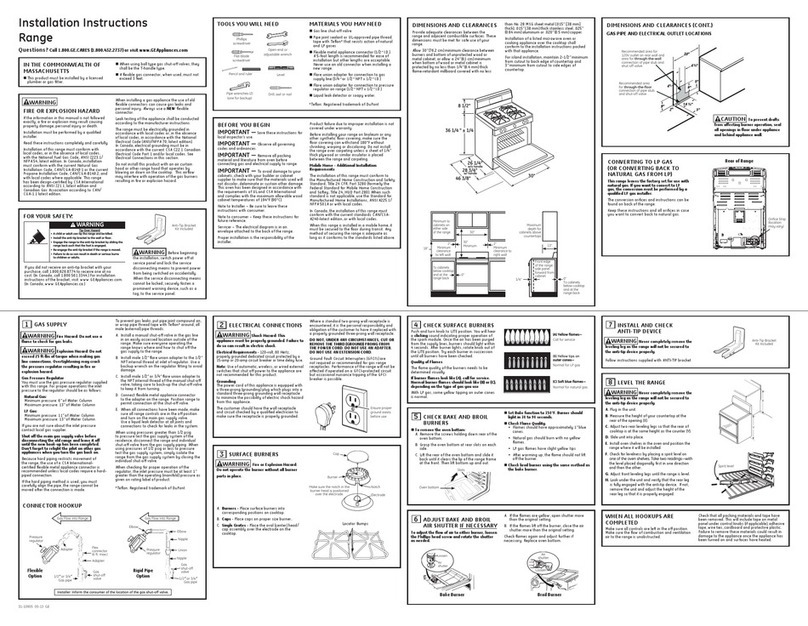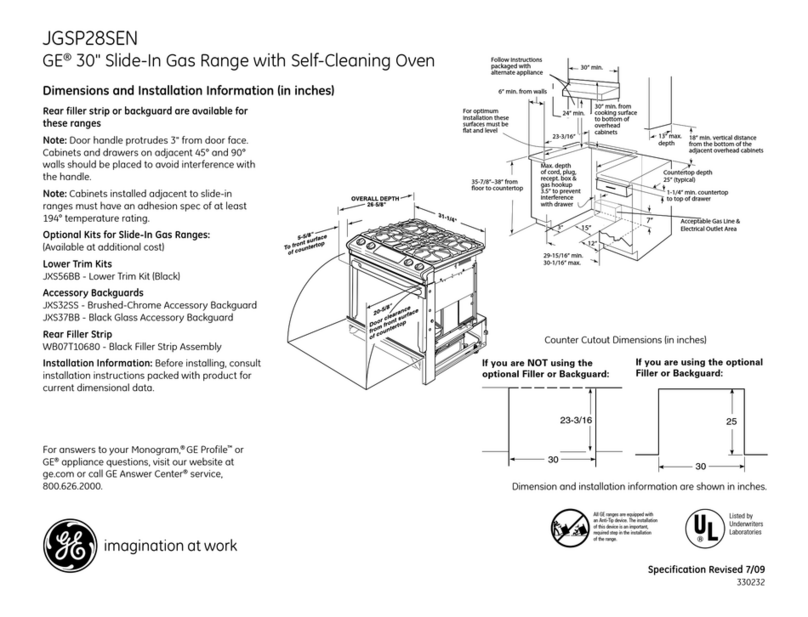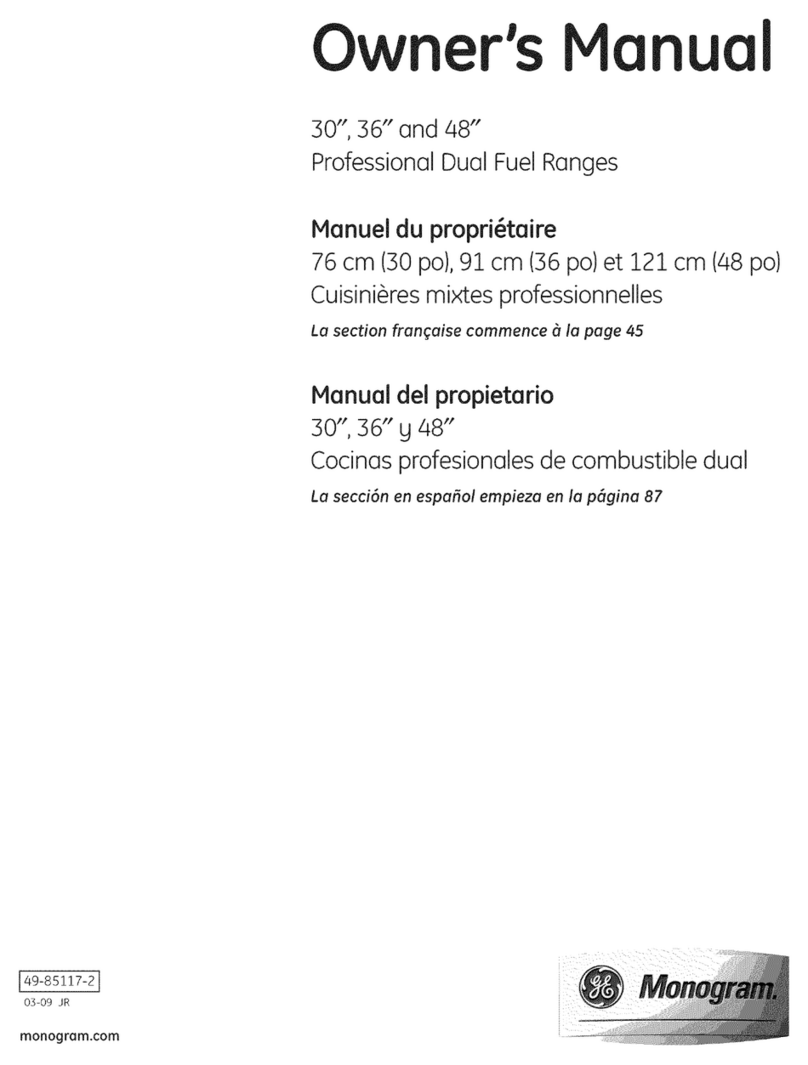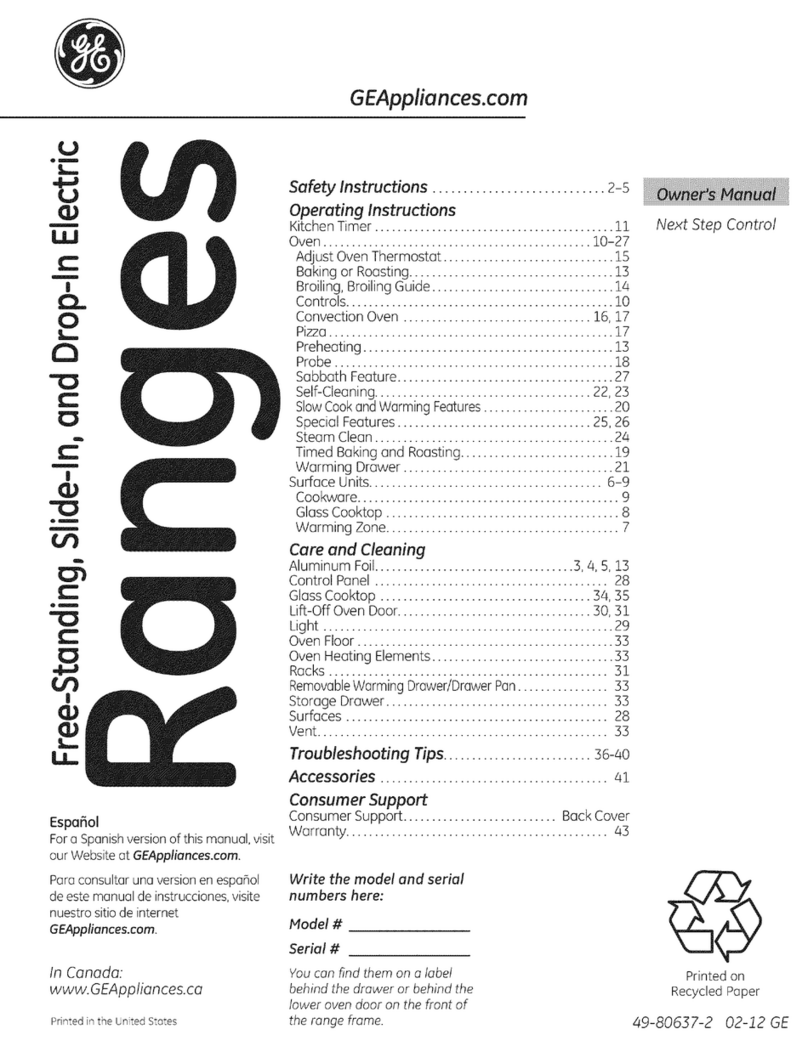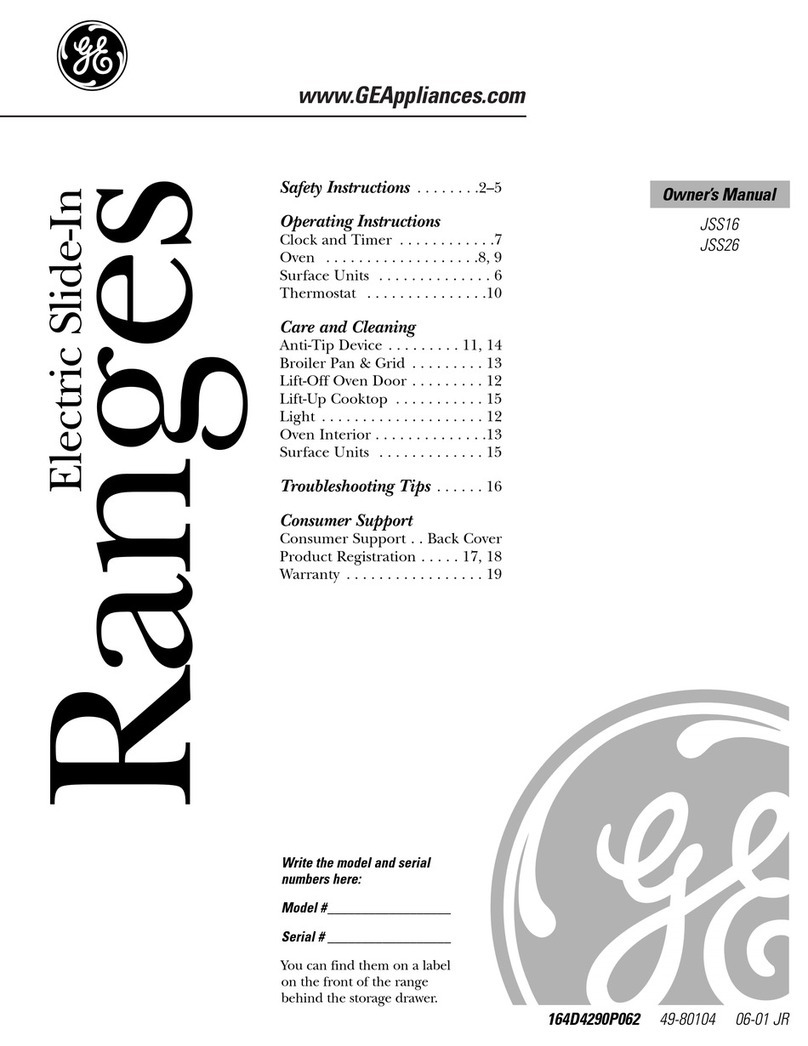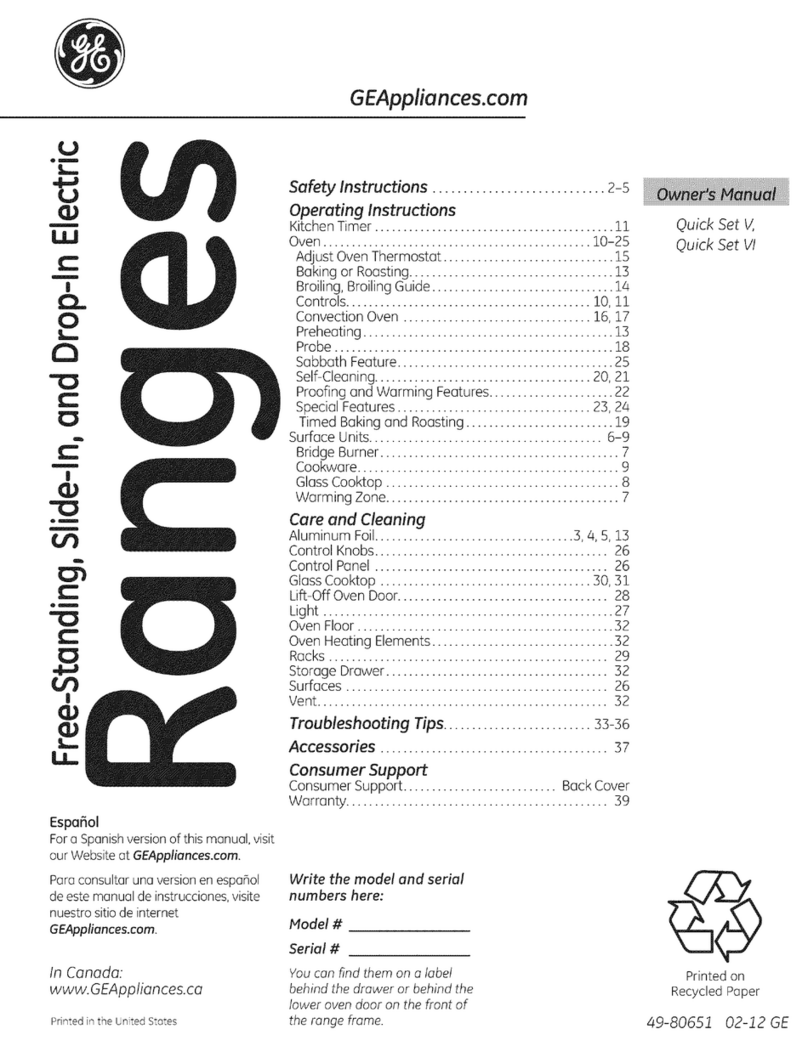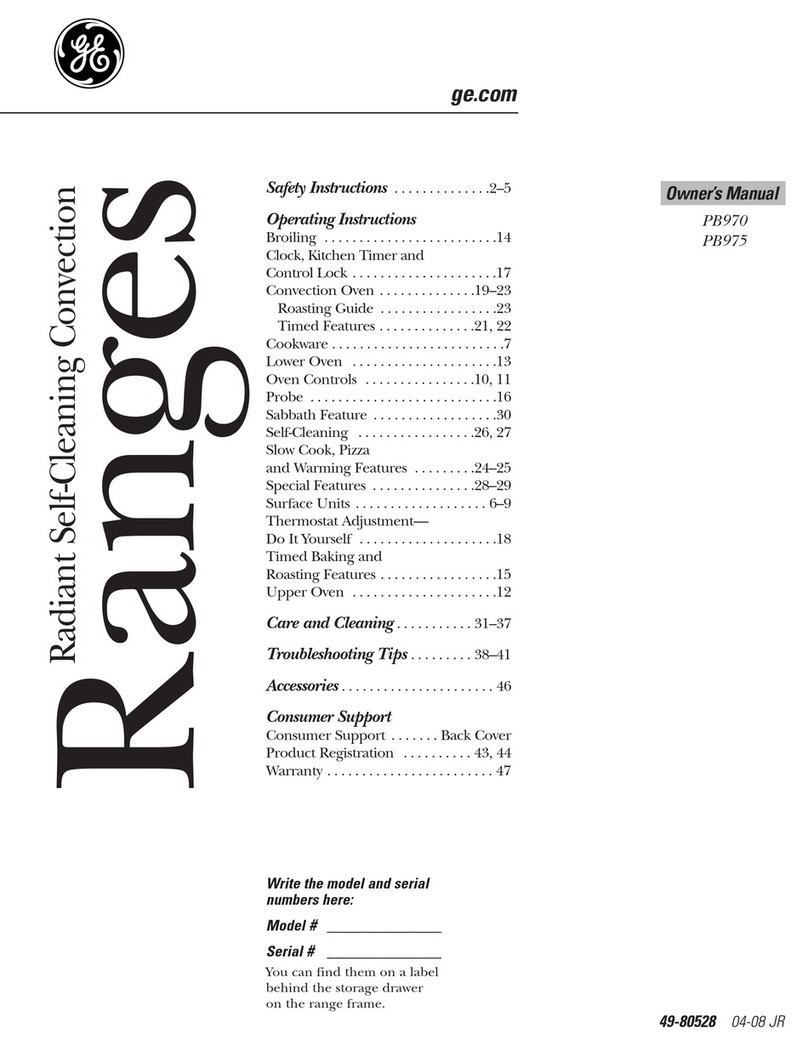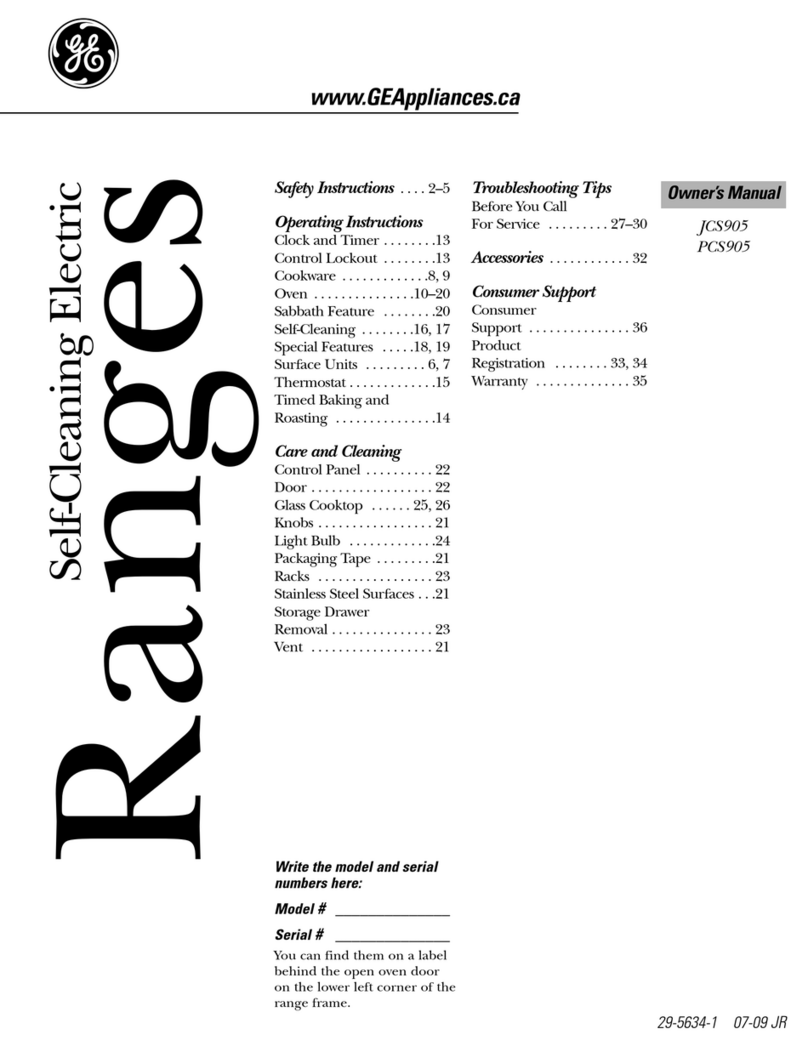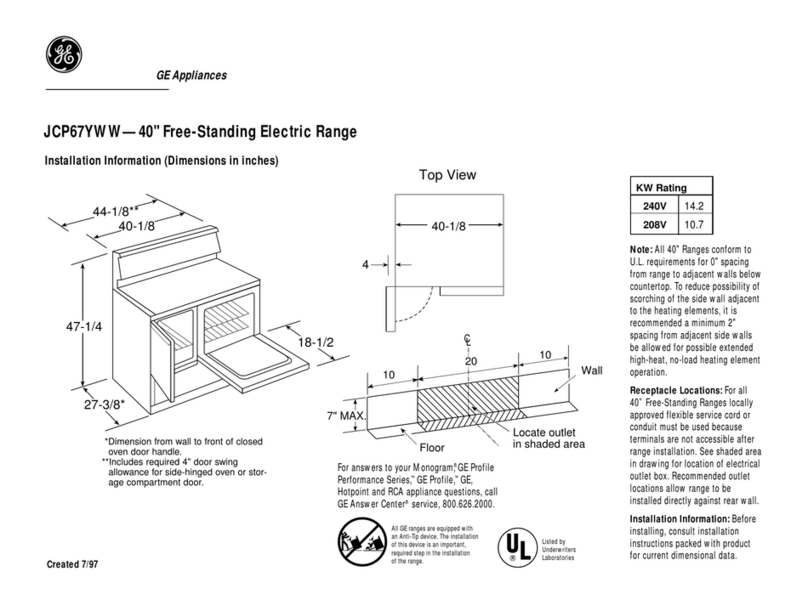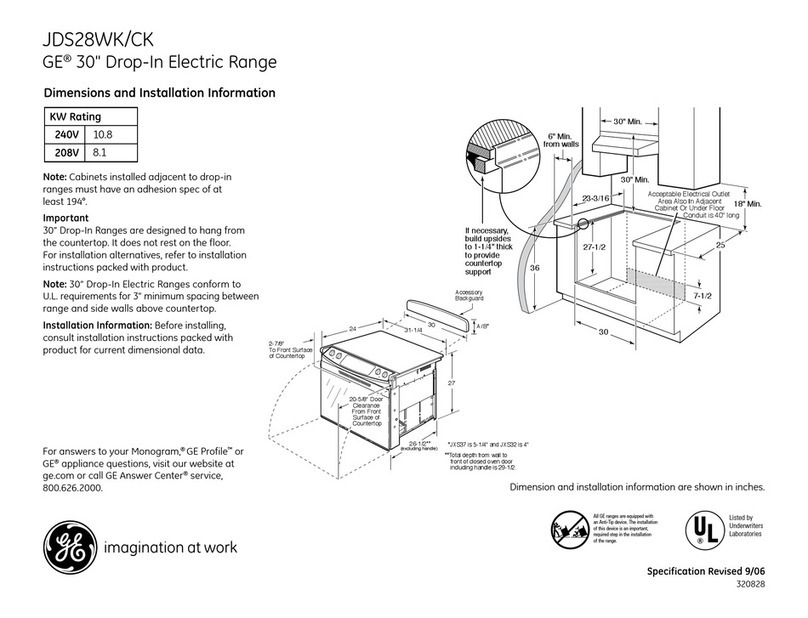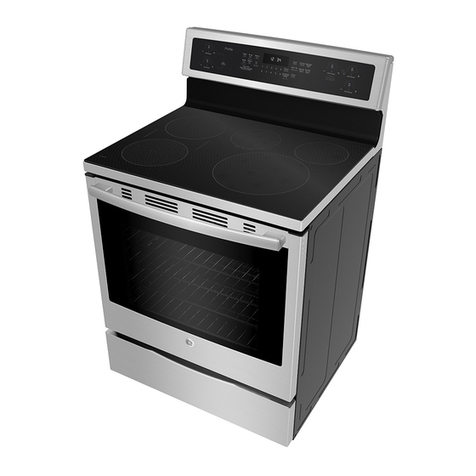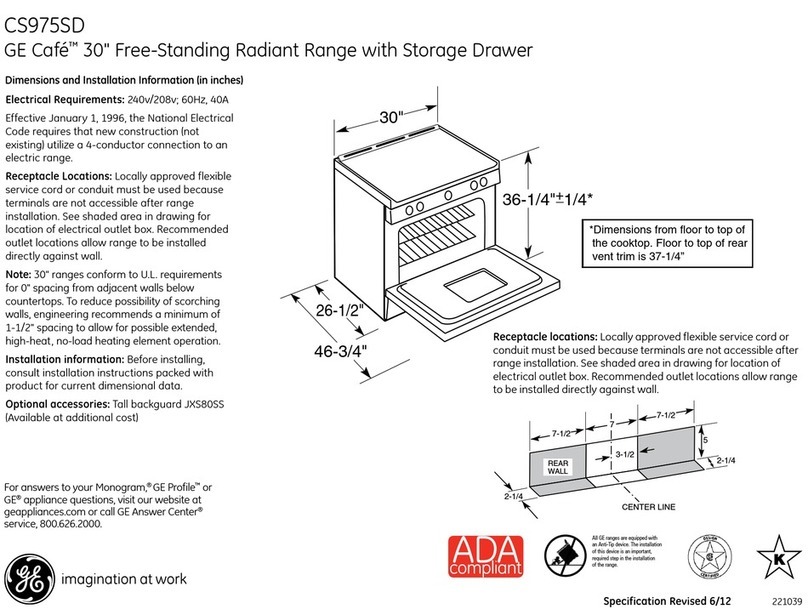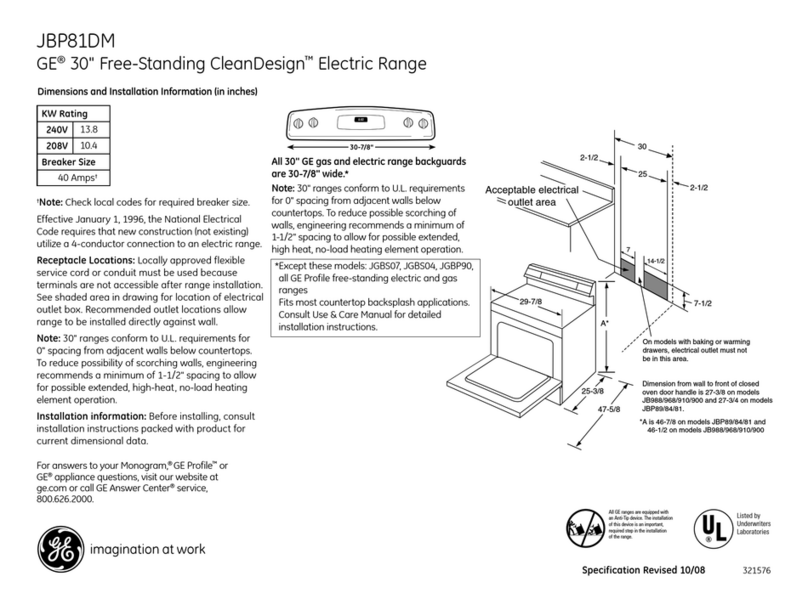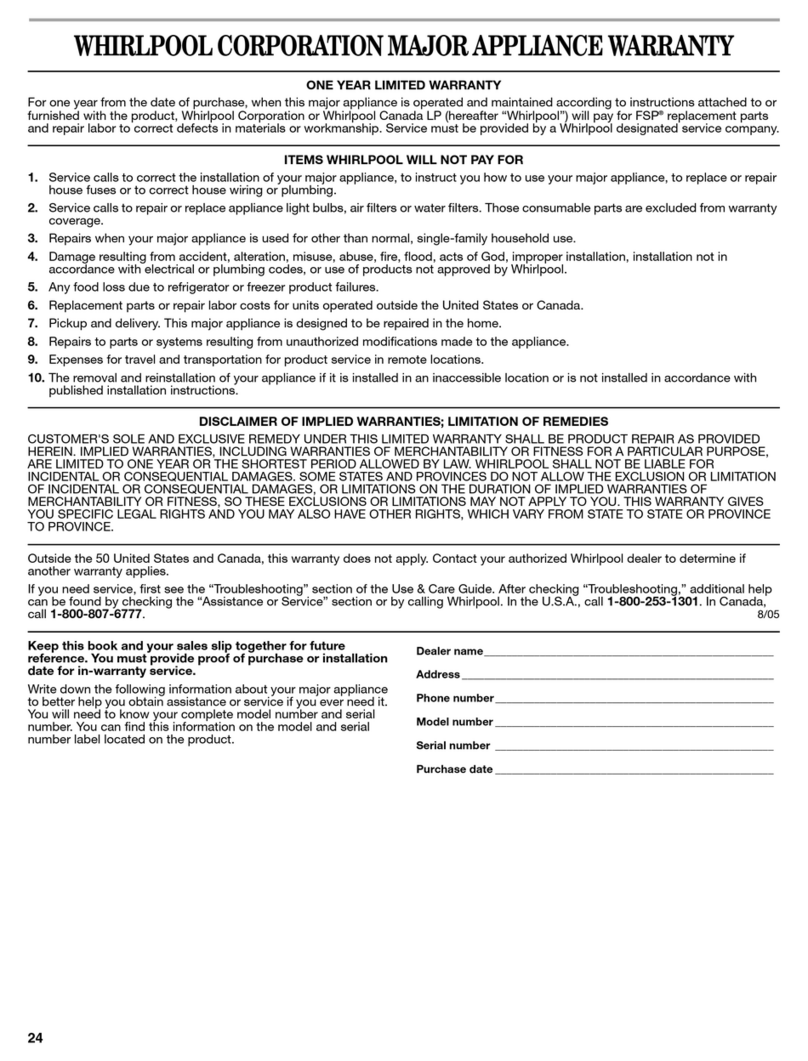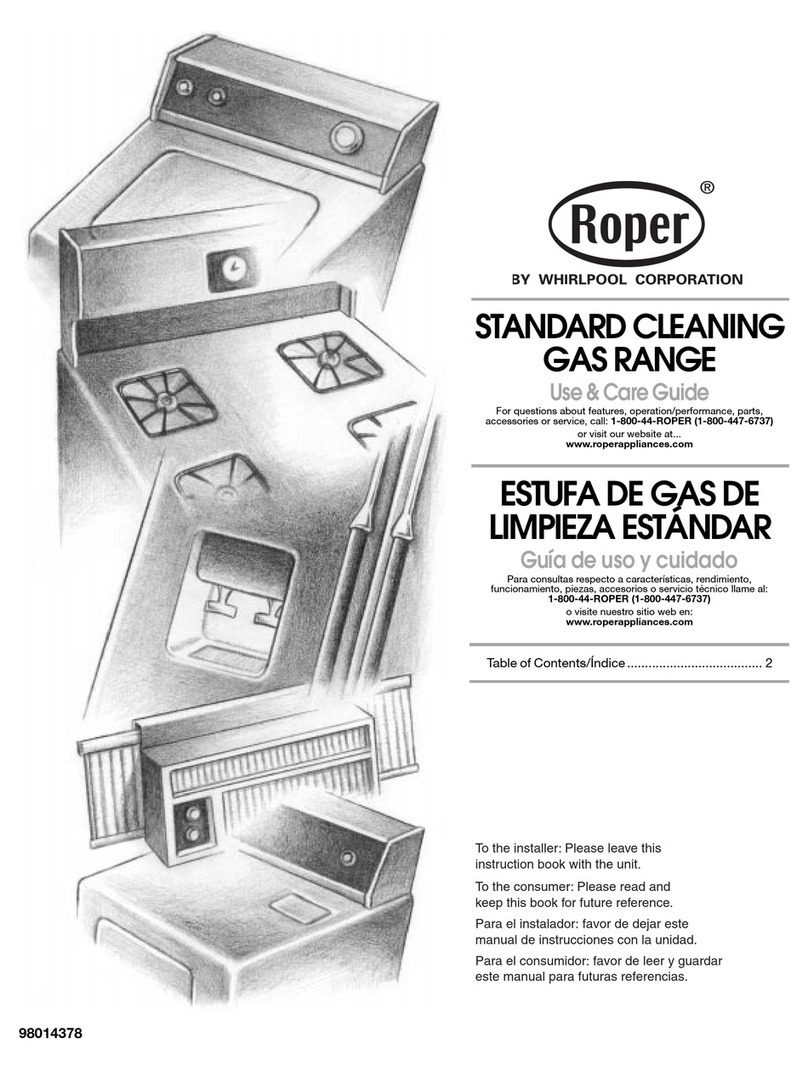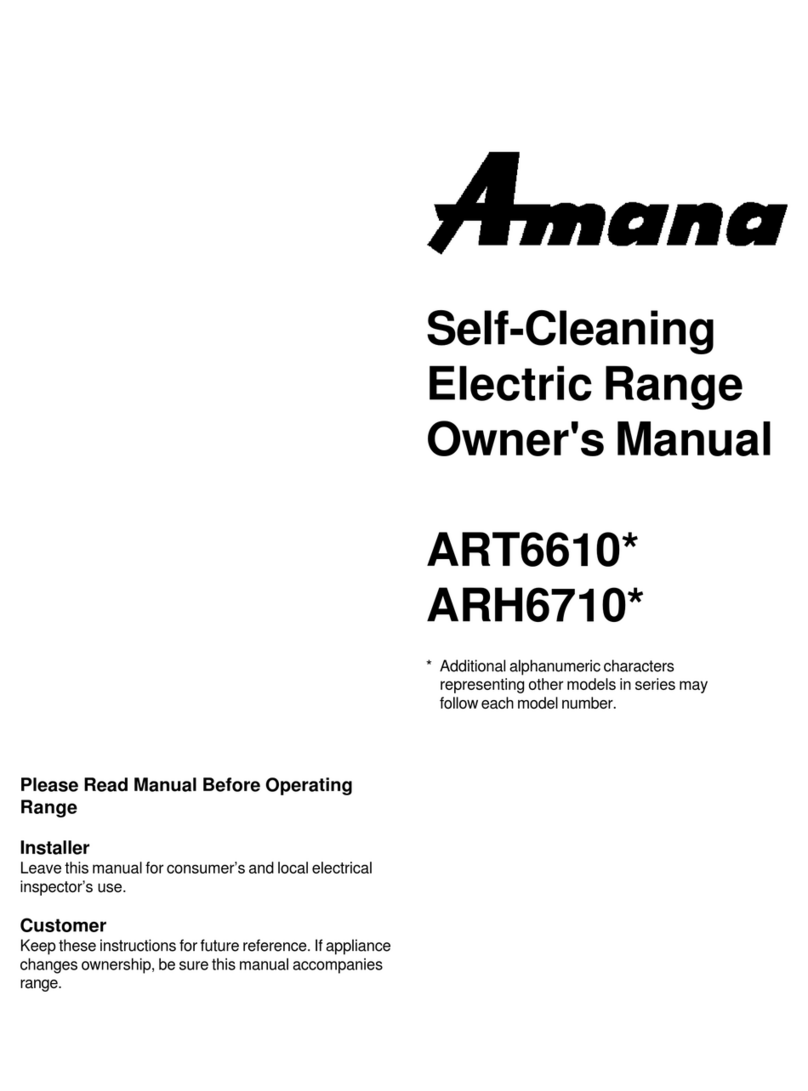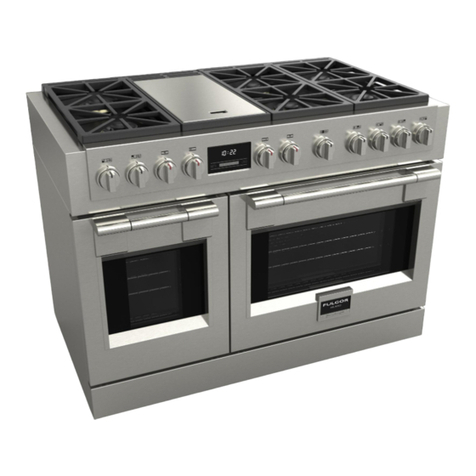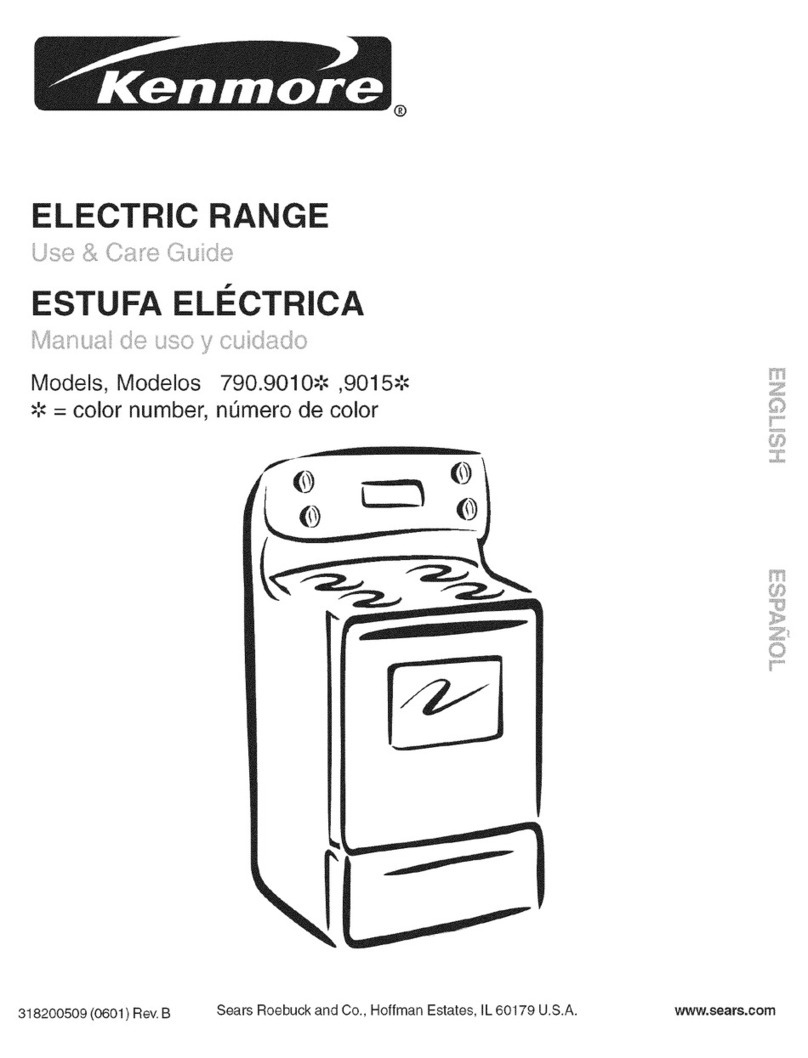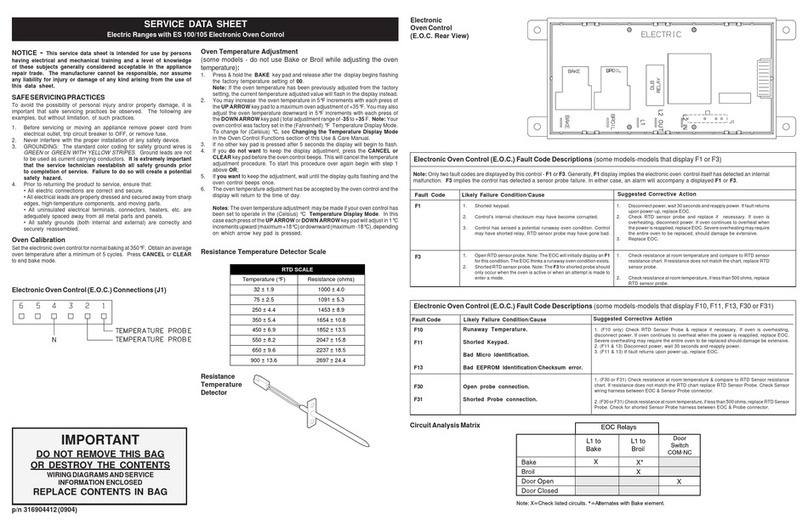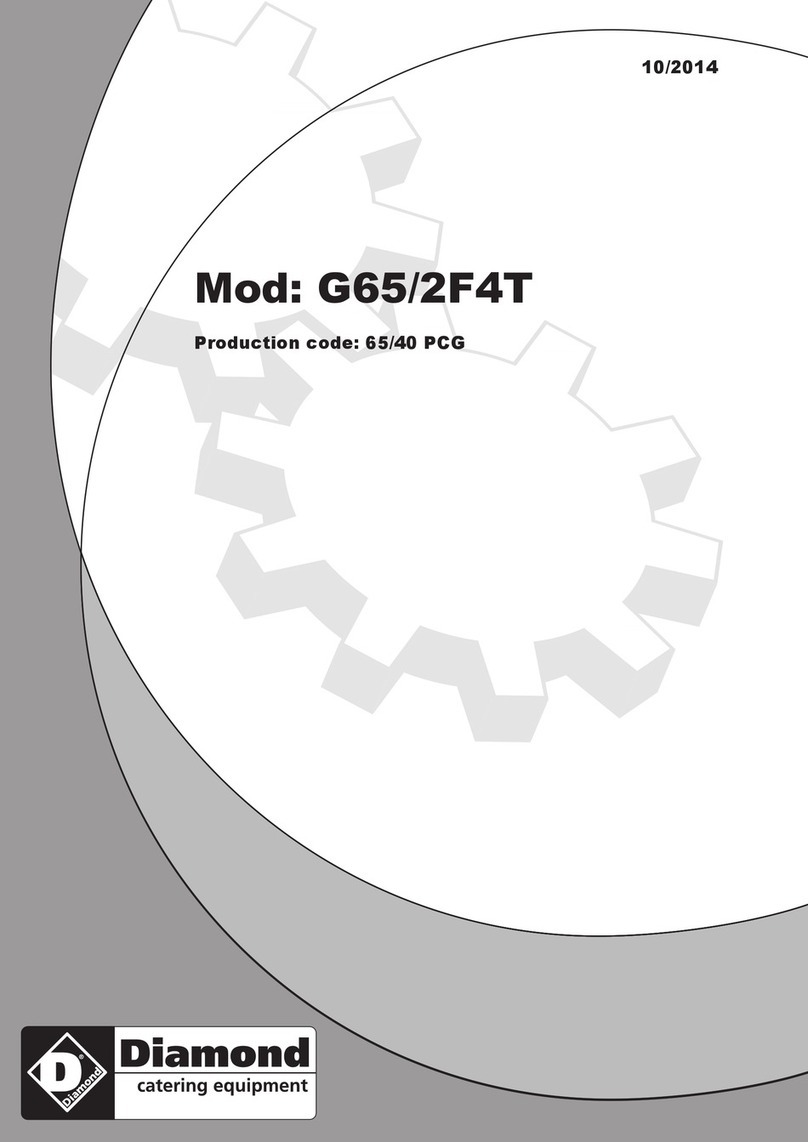WORTANT SA~~ ~STRUC~ONS
(contlnud)
●Do notstoreflammablematerhdsin an oven
or nearthe cooktop.
●DO NOT STOREOR USE COMBUST~LE
MATE~LS, GASOL~ OR OT~R
FLAWBLE VAPORSAND LIQU~S
~THEVIC~ITY OF T~S OR ANY
OTHERAPPLMNCE.
●Keephood and grease~ters cleantomaintain
goodventingandtoavoidgreasefries.
●Do notlet cookinggreaseor otherflammable
materkdsaccumdate in or nearthe range.
B
●Do not use water on greasefires.
,d Neverpick up aflamingpan. Smother
flamingpanonthesurfaceunitby
coveringpancompletelywithwell-
fittinglid,cookiesheetorflattray,orifavailable,
usedrychernicdorfoam-typeextinguisher.
flaminggreaseoutsideapancanbeputoutby
coveringwithbakingsodaor,ifavailable,amulti-
purposedrychetical orfoam-typefire
extinguisher.
Nameintheovencanbesmotheredcompletely
byclosingtheovendoorandpushingthe
CANCELbuttonoruseachemicalorfoam-
typeextinguisher.
●Do not touchthe heating elementsor interior
surfaceof ovenand surfaceunits. These
surfacesmaybehotenoughtoburneventhough
theyaredarkincolor.Duringandafteruse,donot
touch,orletclothingorotherflammablematerials
contactsurfaceunits,areasnearbysurfaceunitsor
anyinteriorareaoftheoven;allowsufficienttime
forcoo~ng,frost.
Potentiallyhotsurfacesincludethecooktopand
areasfacingthecooktop,ovenventopeningand
surfacesneartheopening,andcrevicesaroundthe
ovendoor,andmetaltrimpartsabovethedoor.
Remember:Theinsidesurfaceoftheovenmay
behotwhenthedoorisopened.
.Donotcookon abrokenglasscooktop,
Spilloversorcleaningsolutionmaypenetrate
abrokencooktopandcreateariskofelectrical
shock.Contactaqual~ledtechnicianimmediately
shouldyourcooktopbecomebroken.
●Use carewhentouchingthe cooktop.Theglass
surfaceofthecooktopwillretainheatafterthe
controlshavebeenturnedoff.
4
\●Cleanthe cooktopwith caution.
Hawetspongeo~clothisusedto
wipespillsonahotcookingarea,be
●
carefultoavoidsteamburn.Somecle~sers can
producenoxiousfumesifappfiedtoahotsurface.
men cookingpork,followthedirections
exactlyandalwayscookthemeattoaninternal
temperatureofatleast170°F.Thisassuresthat,
intheremotepossibilitythattrichinamaybe
presentinthemeat,itwillbekilledandthemeat
willbesafetoeat.
Oven
●Stand awayfrom rangewhenopeningoven
door.Hot airor st- whichescapesmn
causeburns to hands,face antior eyes.
.Do not heat unopenedfood continers.
Pressurecouldbutidup and the container
couldburst, musing an injury.
●Keepthe ovenvent duct unobstructed.
sKeepthe ovenfreefrom greasebutidup.
●Placethe oven she~ in the desiredposition
w~e the ovenis cool.Htheshelvesmustbe
handledwhenhot,donotletpotholdercontact
theheatingunitsintheoven.
●~ling out the she~ to the she~ stopis a
conveniencein ~iting heavyfoods. It is also
aprecautionagainstburnsfrom touching
hot surfaces of the doororoven walls.
●men using cookingor roastingbagsin oven,
foflowthemanufacturer’sdirections.
sDo not use your oven to dry newspapers.
Ifoverheated,theycancatchfue.
●Do not use oven for astoragearea.Items
storedinanovencanignite.
●Do not leavepaperproducts,cookingutensils?
or food in the ovenwhen not in use.
●After broiling,alwaystakethebroilerpanout
oftherangeandcleanit.Leftovergreaseinthe
broflerpancancatchfue thenexttimeyouuse
thepan.
●Never leavejars or cans of fat drippingson or
nearyour oven.
